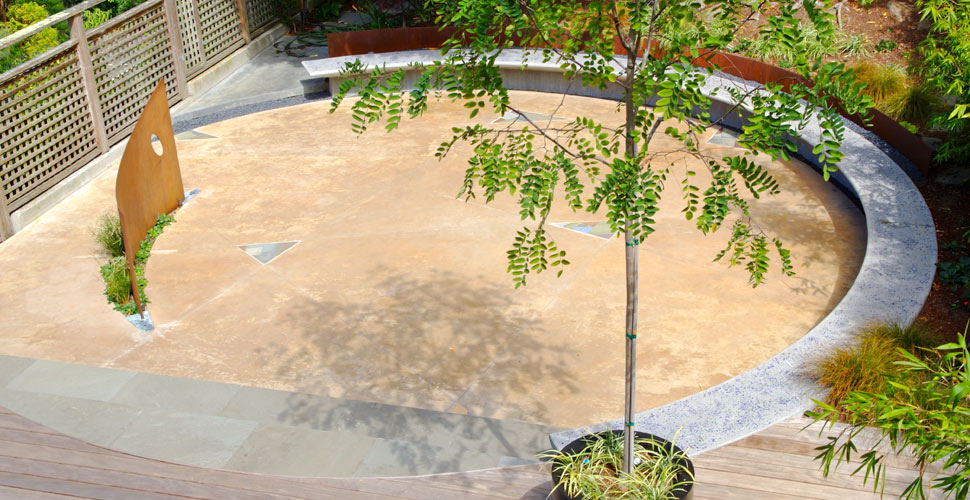Share This Post
Calm Inspiration in Contemporary Times
Whenever I travel to Europe and Asia, I see art and architecture crafted and merged into so many of the buildings and homes. There exists a sensibility in art, craftsmanship, and design that we associate with works of the past. There is so much detail to appreciate everywhere—and so much expression.
In the art of building, expression is in the details. Building details with expression emotionally grabs us. Expression that is manifested in art, objects, and buildings with a rigorous understanding of form and cultural content makes us feel connected to the art, object, or building. Perhaps, this is the reason we look to and admire the work of the past. But rather than mimic the details of the past, I suggest we inspire ourselves to find the appropriate expression of the present…by doing so, we can create new, original details that are true to our own times.
Nature as Grand Artisan
In the natural world, details evolve from form and function. Nature creates effortlessly, and appropriately expresses the details. In an ideal, man-made world, contemporary design could and should emulate a style based on the present, one in which all the seasons are expressed, from the stark, bare, forms of Winter to the bouquet of flowers in Spring; the fruits of Summer, followed by the colors of Fall leaves. In the natural world, what evolves as form following function is collectively the purest state of creativity. Hm…perhaps, this is what Frank Lloyd Wright meant by “organic architecture”—design for all seasons.
There are, I suppose, as many paths to creative, timeless expression as there are people who have successfully taken those paths. So it is with great humility that I venture two simple approaches for creating timeless design in our homes:
- Gain an understanding of the whole picture, the context, the architecture—before sweating the details.
- Work with your hands, directly playing with the raw materials—the wood, metal, stone, or concrete—allowing form, function and expression to flow naturally. The process becomes living culture.
Indigenous craftspeople and native artists, those whose work we admire in museums, the non-architects who created Chaco Canyon, and the masons who built cathedrals shared this approach. Most importantly, they took their time while they worked with their hands.
Choosing a Medium for Expression
Carpenters have looked to New England timber framing, Shaker furniture and Japanese joinery for inspiration. In the same vein, I have tried to look at my concrete counters the same way.* The last few decades have marked an appreciation for working with our hands—a tactile experience that links us to art, architecture and craft. Fine Woodworking and Fine Homebuilding magazines were born out of this movement and built an audience eager to trade tips and inspire good craftsmanship. Christopher Alexander’s A Pattern Language, and A Timeless Way of Building, are eloquent treatises on how we had lost our inheritance, the “pattern language of designing and building instinctively,” and how sadly we are now “adrift in superficial trends and styles, without a cultural guiding hand.”
Concrete became my material of choice precisely because—with it in my hands—I could be expressive in detail and simultaneously remain true to structure and form. I could work with my hands and produce original work in a forgiving medium. I believe it is possible to design and build at any scale, from simple countertops to entire buildings, and invest this notion of appropriate expression in the details. The details are not gratuitous throwbacks to another era, but the genuine product of the present, of our current times. When we call a design a “classic,” it means that it was created with an expression that captured the essence of the times. Ironically, by capturing the essence of the present, “classic” design transcends trends and becomes timeless.
In our work at Cheng Design, I always strive to balance between the innovative and the emotional, between the spare contemporary and the warm traditional. But the ultimate success of these projects rests in how well they fit in composition, form, color, and proportion to the spaces where they reside. Concrete is best when used in the context of design and craftsmanship as a whole—not just plunked down in the form of floors, counters, or walls simply because it’s fashionable. We must consider the whole picture, the intended expression and how this expression will be translated in the details.
Setting a Pace, Telling a Story
Whether our work becomes yesterday’s news or tomorrow’s classics is for you, your children, and hopefully their children, to decide. Besides, concrete has considerable mass and is not easy to budge that they may become permanent (or timeless) by default! Nonetheless, by working with this spirit, the commitment to expression, aesthetics, and the art of building will grow and permeate our culture.
Survey your surroundings, your project, your context, your emotions. Then create compelling ways to express them—to tell a story, your story—all the way down to the details. Just remember to enjoy the walk…don’t run!
I find that the term “decorative concrete,” the description used in the concrete industry for non-structural concrete work, is unfortunate and one I hope we don’t take too literally because it suggests impermanence and is devoid of emotional content. Basically, “decorative concrete” sounds as if it refers only to looks and lacks any true substance.
Share This Post

